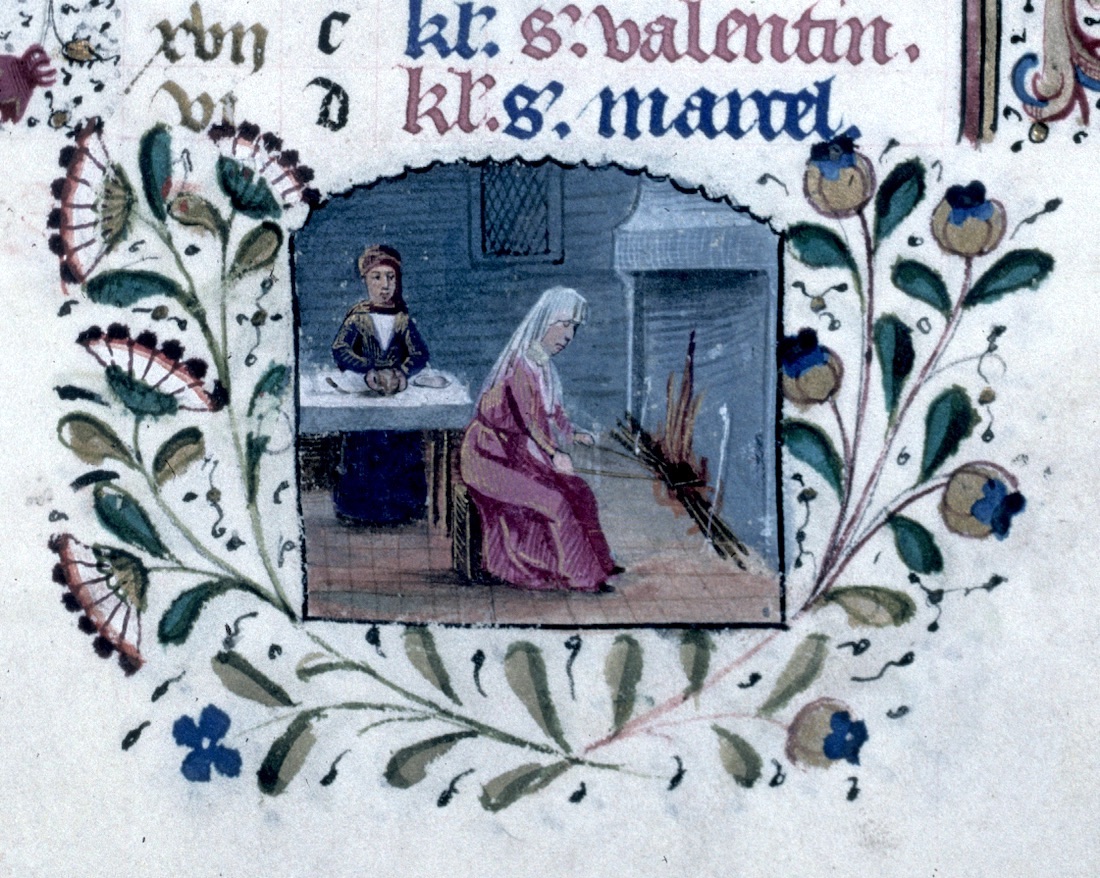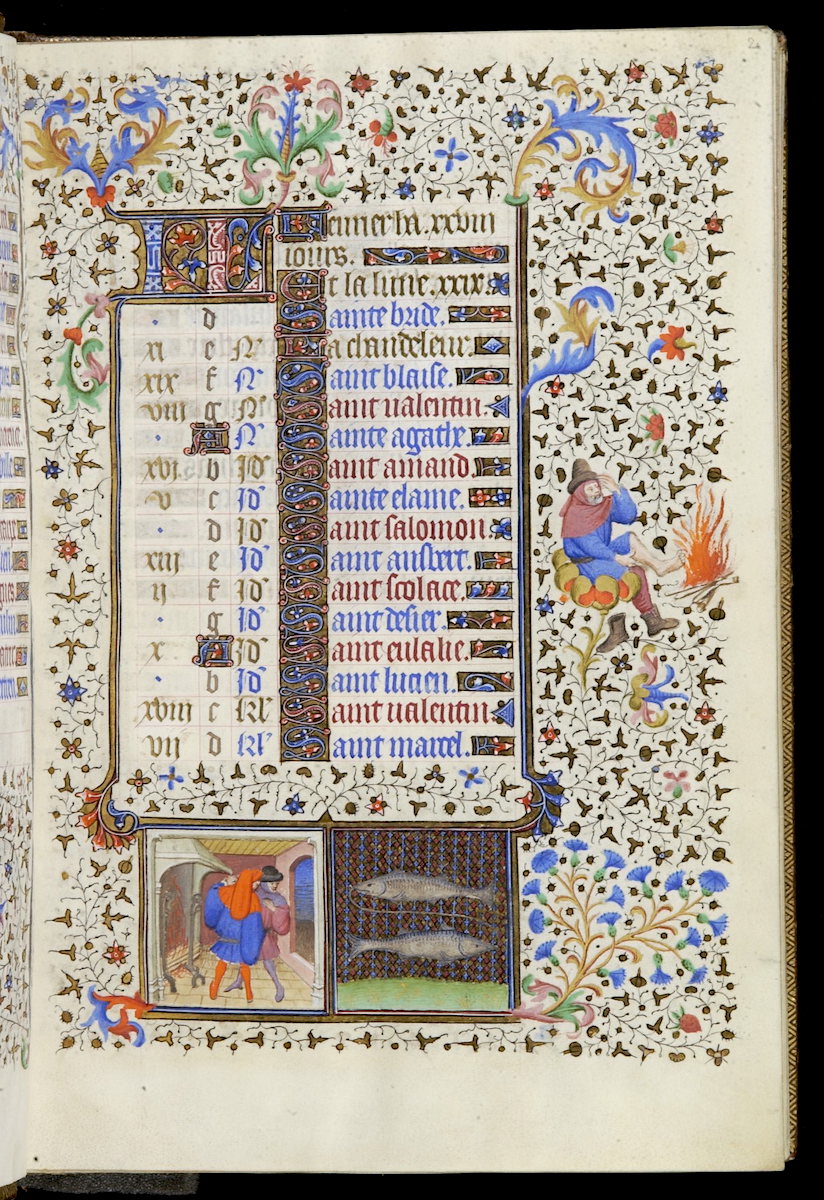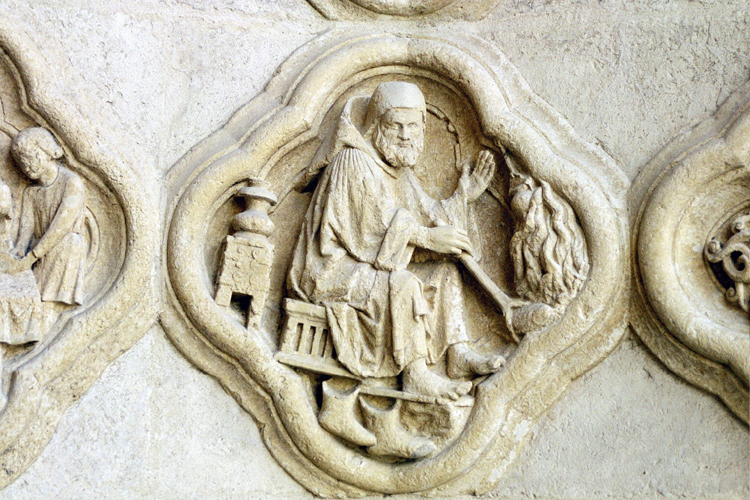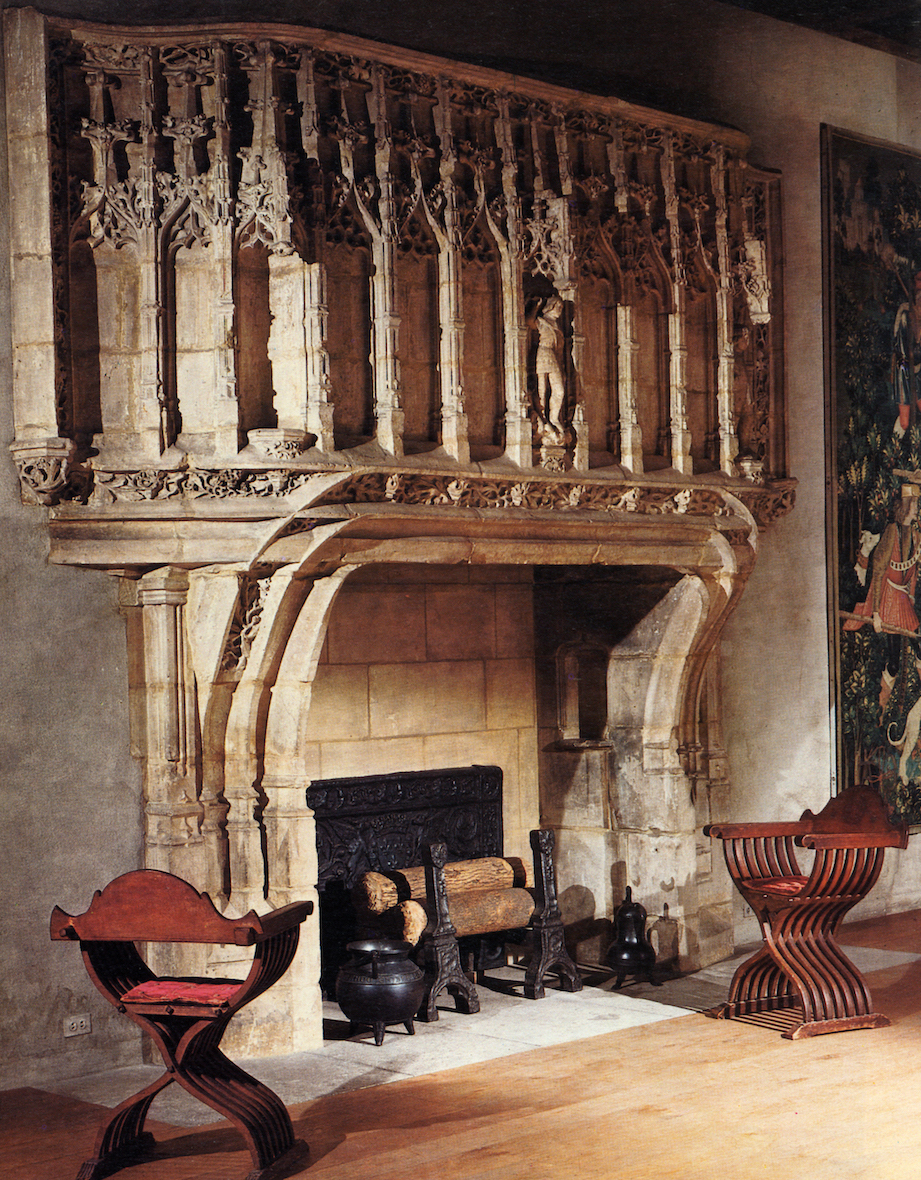

In northern climes, the beginning of February used to be reliably miserable. It was always the time of year when the sedentary heart of winter was covered in forgetful snow, and we took refuge indoors while the wasteland outside was feeding a little life with dried tubers (to paraphrase T.S. Eliot). Groundhog Day is in early February for a reason. Every year, in our collective longing for an early return of spring, we eagerly anticipate the meteorological insights of a skittish marmot. And so, despite the unseasonably warm temperatures in Princeton this week, we couldn’t help but explore some imagery traditionally associated with the month of February.

In many manuscript calendar illustrations, the occupational image for February depicts an interior scene, a room in which figures warm themselves before a fireplace. Seated at the hearth, a female servant, or perhaps the woman of the house, stokes the fire. Often in such scenes, a man sits at a table spread with food and dishes. The Index of Medieval Art subject heading identifies this scene as the “Labors of the Month, February.” Certain components of this subject, such as “Fireplace,” “Table,” and “Feasting,” also have their own subject designations.

Other attributes common to the February warming scenes are figures performing such actions as blowing a bellows at the fire, cooking food in a pot over the flames, carrying bundled firewood indoors, or wearing heavy furs. A marginal miniature in the calendar of a fifteenth-century Book of Hours from Burgundy depicts a typical February scene with several of these domestic elements: a woman wearing a veiled headdress stokes a glowing fire in a simple stone fireplace while, behind her, a warmly dressed man seated at a draped table clings to a morsel of food (Fig. 1).

Searching the Index of Medieval Art database with simple keywords such as “fireplace,” and using the Subject Filter for “Labors of the Month, February,” will return a little more than seventy work of art records. Most of them appear in illuminated manuscripts. One such fifteenth-century Book of Hours from Paris or Flanders contains a February calendar page with two square miniatures of equal size in the lower margin. One of these paired miniatures shows the typical interior occupation of February, figures by the fire. The other shows the usual zodiac sign, Pisces, as a pair of fish lying head to tail with a line connecting them by their mouths. In the right margin, the artist created a comical moment: among the densely scrolled foliate borders, a man sitting on a fantastic flower raises his bare left foot toward some blazing logs (Fig. 2). In February, even marginalia need to warm their toes!

Other database filters will discover results illustrating February in different media, such as a man warming himself in the quatrefoil stone relief sculpture on the west façade of Amiens Cathedral. While this February figure sits and adjusts logs on the fire, his shoes are neatly placed in the foreground (Fig. 3). As is common for all twelve labors of the months, iconographic variants occur among these images, and monthly tasks are not fixed. Indoor cold weather occupations—including feasting, cooking, and baking—can be found in the previous months of January and December, often in similar compositions with fireplaces. February illustrations may also show outdoor scenes, such as slaughtering animals, fishing, digging fields, or pruning vines.

Keeping warm and dry during the winter months was a matter of survival for medieval people. Even today our good health and happiness are at risk in the winter. While its fires are long extinguished, this fine fifteenth- or sixteenth-century French limestone fireplace, today on display in the Met Cloisters, was likely once the architectural centerpiece of a home, and we can still imagine its appealing warmth (Fig. 4). Whether you are enjoying a restfully sedentary season or the official start of the spring semester has you thoroughly engaged in your own labors of the month, we wish you a warm and happy February!